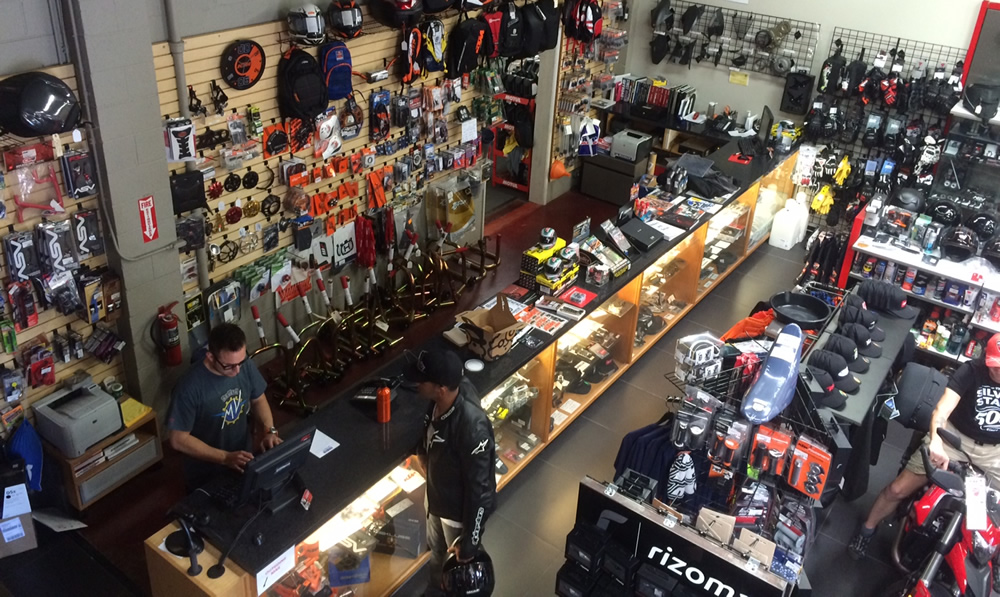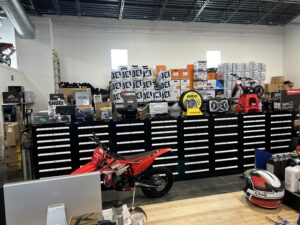Browse Through Our Motorcycle Shop for Professional Suggestions and High Quality Products
Browse Through Our Motorcycle Shop for Professional Suggestions and High Quality Products
Blog Article
Understanding the Necessary Components of a Bike: A Comprehensive Overview for Enthusiasts
For bike enthusiasts wanting to raise their riding experience and guarantee their bikes run efficiently, recognizing the vital parts of a motorbike is extremely important. Each component, from the engine's elaborate operations to the critical function of the stopping systems, not just influences efficiency but additionally safety and security and comfort. This guide will go through the essential components that every rider ought to recognize with, making it possible for notified choices in both maintenance and potential upgrades. As we begin this exploration, one must ask: exactly how does each component connect to create the seamless adventure every enthusiast looks for?
Engine Parts

The camshaft plays an essential role in regulating the timing of the engine's shutoffs, ensuring the precise opening and closing needed for effective gas and air consumption, in addition to exhaust expulsion. This timing is crucial to preserving optimal engine performance and effectiveness. In addition, the carburetor or fuel injection system, relying on the motorcycle model, is accountable for mixing air with fuel in the right proportion for combustion.
The cooling system, either air or liquid-based, functions to keep the engine's temperature within functional limits, stopping overheating and guaranteeing durability - motocross gear nz. Each component, thoroughly designed and integrated, adds to the smooth operation of the engine, specifying the motorbike's power outcome and overall efficiency
Transmission System
Indispensable to the bike's performance, the transmission system makes sure effective power transfer from the engine to the wheels. This system comprises several essential components, consisting of the clutch, gearbox, and final drive, each playing a vital duty in translating the engine's power into movement. The clutch, usually operated by a hand lever, serves to disengage the engine and engage from the transmission, allowing for smooth equipment changes and controlled velocity.
The gearbox, usually described as the transmission correct, consists of a collection of gears that bikers can manually shift through to change the bike's speed and torque output. These gears are set up in a series that enables the motorbike to increase efficiently and maintain optimum engine efficiency throughout various speeds. The majority of motorcycles utilize a sequential transmission, needing the rider to change gears in a predetermined order.
Braking Systems
While understanding the transmission system is key to taking advantage of a bike's power, similarly important is the capacity to regulate and quit that power efficiently, which is where stopping mechanisms enter play. Brakes are vital for security and performance, supplying the cyclist with the necessary control to navigate various terrains and problems. Usually, motorbikes feature two kinds of stopping systems: disc brakes and drum brakes.
Disc brakes are extra prevalent in modern-day bikes because of their superior performance. They are composed of a brake disc, caliper, and pads. When triggered, the caliper presses the brake pads versus the spinning disc, transforming kinetic energy right into warm, thereby slowing down the wheel. site web This system provides far better warmth dissipation, consistent efficiency, and enhanced stopping power, particularly in damp problems.
Alternatively, drum brakes, though much less common, are still discovered in some bikes. They function by pushing brake shoes against the inner surface of a drum connected to the wheel. While normally less efficient in heat dissipation and quiting power, drum brakes are simpler and much more economical.
Understanding these braking systems' nuances enables riders to preserve their motorbikes properly and appreciate the engineering that makes sure secure and reliable quiting.
Suspension and Steering
Suspension and guiding systems are crucial components that considerably affect a motorbike's handling and experience comfort. The shock absorber, being composed of forks at the front and shock absorbers at the rear, absorbs roadway abnormalities, improving security and control. Front forks, normally telescopic or inverted, compress and rebound to mitigate effects, while back shock absorbers keep tire contact with the road, crucial for traction and safety and security.
Guiding, focused around the handlebars, connects the rider to the bike's directional control. The steering head bearings ensure smooth procedure, permitting exact maneuverability. Appropriate positioning and upkeep of these bearings are critical for predictable steering reaction and decreasing biker exhaustion.
The suspension's adjustability is one more crucial element; preload, damping, and rebound setups allow customization to match various riding conditions and styles. This adaptability is important for maximizing performance, whether browsing metropolitan streets or taking on rugged tracks. Advancements like digital shock absorber use real-time adjustments, boosting ride top quality across diverse terrains.

Electric Solutions
After making sure a smooth and regulated adventure through reliable suspension and steering systems, attention transforms to the electric systems, a pivotal facet of modern-day bikes. These systems play a vital role not just in starting the engine yet also in powering different parts that improve the capability and security of the bike.
At the heart of a bike's electrical system is i was reading this the battery, which stores electrical energy needed for beginning the engine and powering auxiliary systems - motocross parts nz. The alternator or generator, combined with the rectifier-regulator, ensures the battery stays billed while the motorbike is in operation, transforming mechanical power into electrical power and keeping voltage levels
The ignition system, another vital element, is liable for stiring up the air-fuel mix in the engine's cyndrical tubes. Modern motorbikes usually make use of a digital ignition system, using higher efficiency and dependability contrasted to traditional systems.
Lights systems, including headlights, tail lights, and signs, are also essential, ensuring visibility and safety and security for the biker. Added digital parts such as sensing units, control systems, and displays contribute to advanced features like fuel shot management, anti-lock braking systems (ABDOMINAL MUSCLE), and electronic control panels, better improving the riding experience.
Final Thought
A thorough comprehension of a bike's important elements, including the engine, transmission system, stopping devices, suspension, steering, and electrical systems, is important for lovers aiming to optimize efficiency, convenience, and security. Mastery of these components allows for informed decisions relating to maintenance and upgrades, ultimately boosting the riding experience. By incorporating this expertise, motorcyclists can guarantee their motorcycles operate at peak efficiency and integrity, thereby making the most of both pleasure and durability of their lorries.
For bike enthusiasts looking to elevate their riding experience and guarantee their bikes run efficiently, comprehending the essential components of a motorbike is extremely important.Essential to the bike's performance, the transmission system makes sure efficient power transfer from the engine to the wheels.While understanding the transmission system is essential to harnessing a motorcycle's power, similarly essential is the capacity to manage and stop that power efficiently, which is where braking devices come right into play. Generally, motorbikes feature 2 types of braking systems: more information disc brakes and drum brakes.
A complete understanding of a motorcycle's vital elements, including the engine, transmission system, stopping devices, suspension, guiding, and electrical systems, is important for lovers intending to optimize convenience, performance, and safety and security.
Report this page